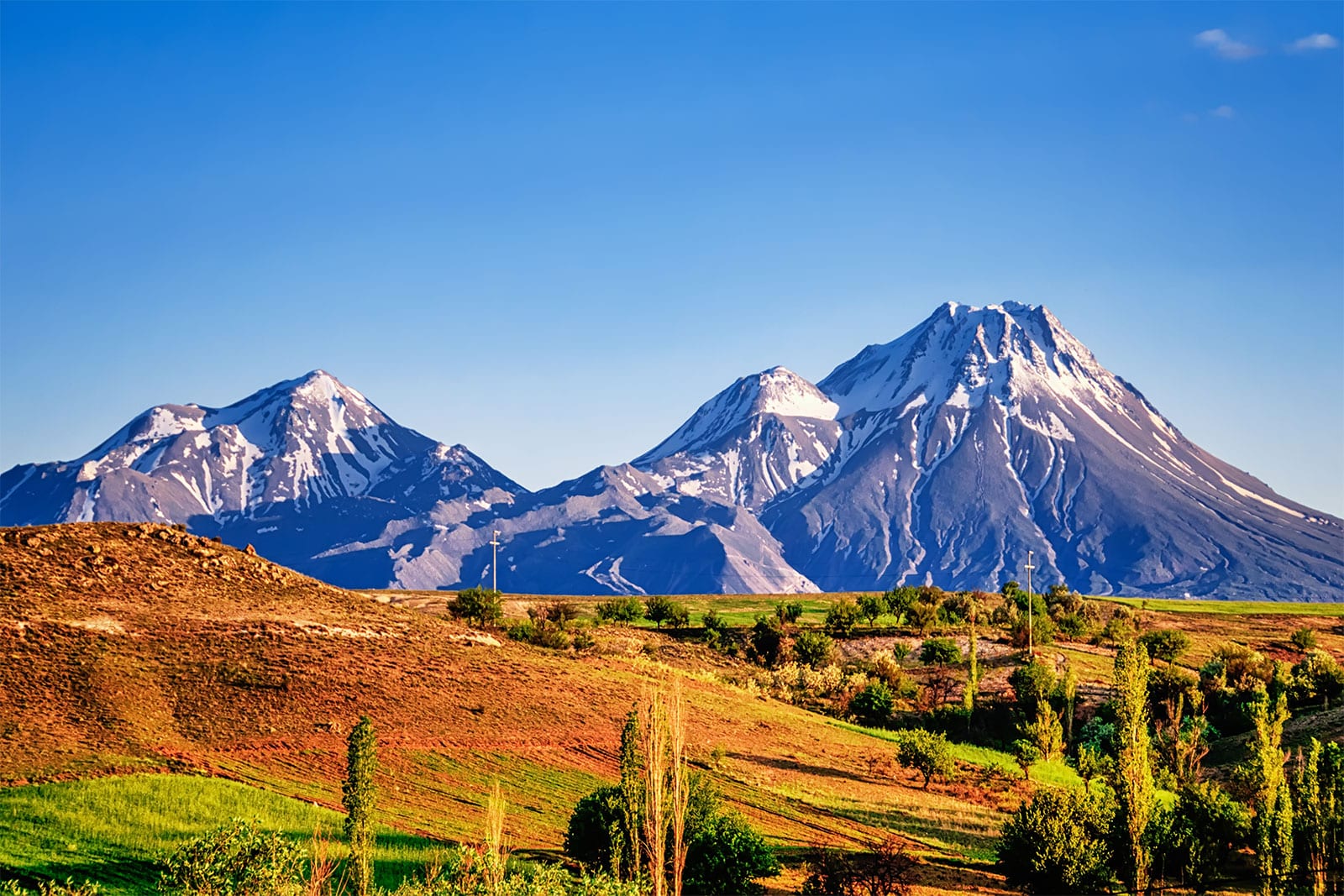In this article, we will explain what Raised Relief is, how this feature is used, and it’s overall usefulness on a world globe.
What is Raised Relief?

Simply put, Raised Relief is small rises (like bumps) on the surface of the globe in specific areas, generally representing vast mountains or mountain ranges. However, one should expect that not every mountain or mountain range will include this feature.
Why isn’t Raised Relief on a globe at scale?
One may anticipate the individual representations to be exaggerated by the actual scale or size of the depicted point of interest; however, this is typically not the case.
The issue of scale becomes problematic on a physical globe due to the distance between the globe ball and the meridian, the metal ring around the world globe that holds it in place. If Raised Relief was to scale at each point, some might be very tall exceeding the space between the globes surface and the meridian, making it not possible to turn past the globes meridian when it hits that particular point.
For example, Mt. Hood in the Cascade Range has a height of 11,250 feet vs. Mt. Everest in the Himalayas with a height of 29,029. To accurately represent Mt. Everest at scale, it would require almost three times the height on the globe. For the most part, manufacturers stick to a standard height and apply that to each occurrence, with the focus being on simply identifying major locations by utilizing the feature.
Why isn’t this feature on every globe?
Today more globes are being produced without raised Relief. The reason is two-fold. First, most customers are interested in an affordable reference or decorative globe solution. The cost to create an injection mold used to form a globes shell with Raised Relief is expensive. Also, the process to fit the map (typically vinyl) over the raised relief shell requires a high level of accuracy. It generally has a more considerable amount of waste produced. As with a car, the more features desired, the higher the price due to the increased cost. It is much more cost-effective to create a flat inner shell in which the accuracy of placing the map is not a significant concern.
Secondly, globe manufacturers have resorted to including various cartographic or styling effects to the actual map to depict the heigh of featured areas, including color shading or the addition of the exact height next to the name of the point of interest.
Which companies make globes with Raised Relief?
Two companies make and or distribute globes with Raised Relief in the United States, Waypoint Geographic, and Replogle Globes. Waypoint Geographic’s items that include Raised Relief are built on an acrylic shell and, in most cases, including illumination. Replogle Globes makes both acrylic shell and cardboard globes that include this feature. Acrylic shells are typically the preferred globe as cardboard globes will generally have some level of misalignment with text or borders, which is simply due to the process used to make these globes.
Do I need this feature?
We suggest that each customer looks for a globe that meets their specific decorative or educational need. It is generally more important for the globe style to fit the decorative purpose of a room, or the intended educational purpose then it would be to have a feature that doesn’t contribute to the overall use. Also, the availability of globes without this feature is much higher.
If Raised Relief is a feature you must have, check out our selection of desk globes with raised relief and floor globes with raised relief. For additional information on the types of features, you might find on a globe visit out the world globe features page to learn more.
